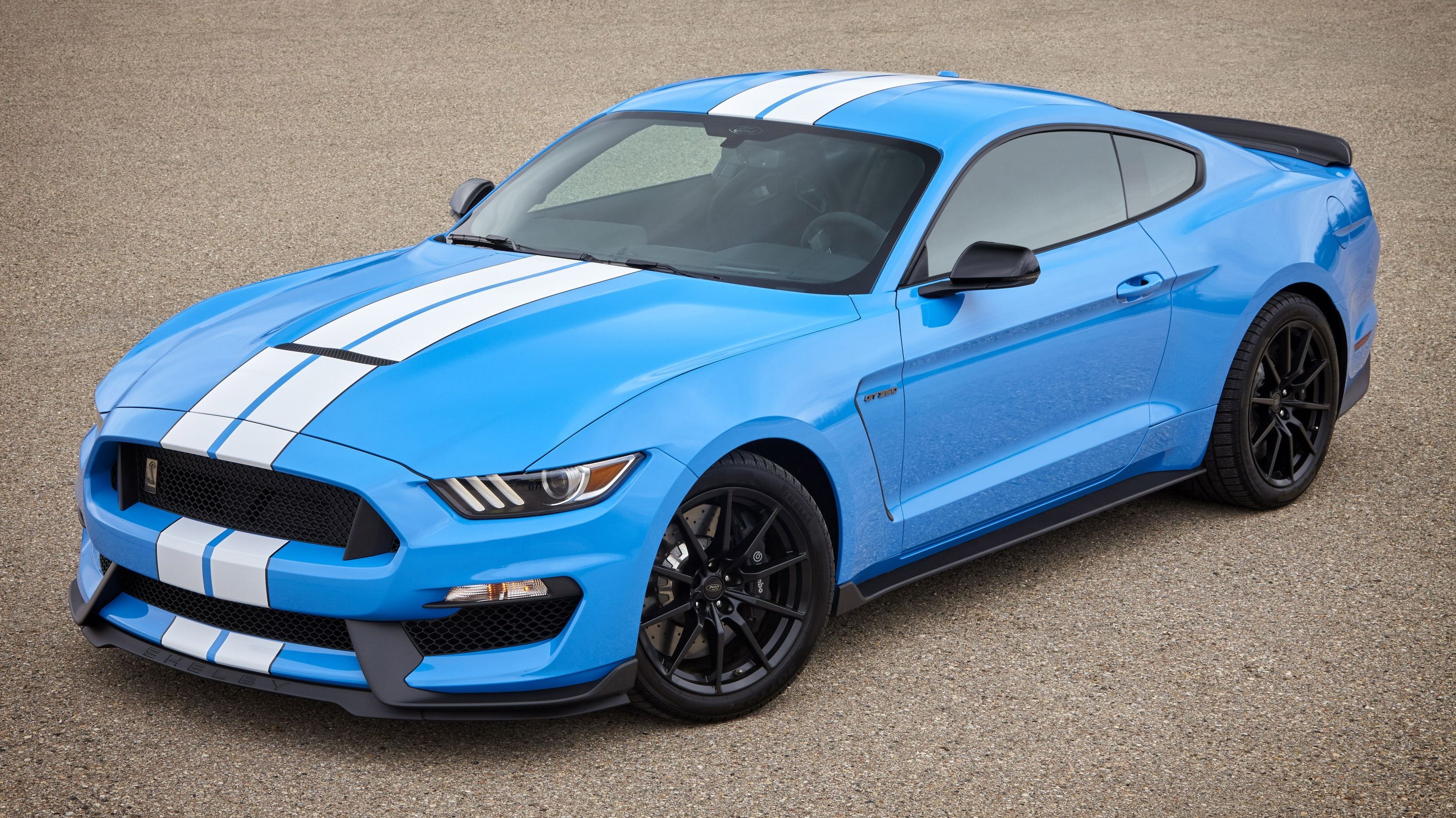After a 42-year hiatus, Ford brought the GT350 nameplate back into play for the fifth-gen, 2011 Ford Mustang. There was no telling if the nameplate would carry on to the sixth-gen model, but sure enough, Ford delivered. With an updated Mustang rolling into dealers for 2018, it was uncertain whether or not the GT350 nameplate would carry on through the remaining life of this generation or not but, as it turns out, Ford knows better. The Shelby GT350 and GT350R will continue on through the 2018 model year, but there’s a catch. Despite the fact that the Mustang was facelifted for the 2018 model year, the Shelby GT350 and GT350R will carry on unchanged from the 2017 model year, so purchasers of this iconic nameplate will have to get by with pre-2018 styling cues.
As a rather small, but fair consolation price, the 2018 GT350 and GT350R will be available in three new exterior color choices that include Orange Fury, Kona Blue, and Lead Foot Gray. The latter of which has the sole purpose of paying tribute to all those guys that crash after a Cars & Coffee meet. Okay, that’s not necessarily true, but I couldn’t pass at a chance to ruffle a few feathers. For those of you who haven’t been paying attention, the Shelby GT350 and GT350R are the baddest Mustangs that you can get at the current time. The do come at a rather stout premium, with the GT350 starting at $56,145 and the GT350R commanding $63,645. That’s an increase over the range-toping GT Premium Convertible of $13,450 and $20,950, respectively.
Some would argue that the massive price hike for either model is well worth it, so let’s take a closer look both models real quick.
What it Boils Down to
The big news about the GT350 and GT350R is the 5.2-liter Flat Plane Crank V-8 that delivers 526 horsepower and 429 pound-feet of torque. It’s the first production engine from Ford with a Flat Plane Crank, while the generation is the first to feature an independent rear suspension system. Output figures are the same for the GT350 and GT350R, but the 350R is more the 130-pounds lighter than the GT350 with the track pack. The GT350 can hit the 60-mph sprint in 3.5 seconds, while the GT350R will do it a few tenths of a second quicker thanks to that mild weight reduction. Shifting duties are handled by a six-speed manual, which routes all that manly power to the rear wheels. On the suspension side of things, the GT350 and GT350R get MagneRide magnetic dampers, just like the systems found in models like the Camaro Z/28, Cadillac CTS-V, and Ferrari 458 Italia. Compared to the lesser Mustangs in the lineup, the 350 models have a wider front track, increased spring rates, and a lower ride height – all to give you better handling. The GT350 gets 19-inch alloy wheels, while the GT350R gets a pair of carbon fiber rollers as standard equipment, making Ford the first major manufacturer to offer carbon fiber wheels as standard equipment. On top of that, they help keep the Mustang toned by shedding 52 pounds over the standard alloy wheels on the GT350 – that’s a savings of 13 pounds per wheel.
|
Model |
Ecoboost |
GT |
GT350 |
GT350R |
|
Type |
2.3-liter EcoBoost I4 |
5.0-liter Ti-VCT V8 |
5.2-liter Flat Plane Crank V-8 |
5.2-liter Flat Plane Crank V-8 |
|
Configuration |
Aluminum block and head |
Aluminum block and heads |
TBA |
TBA |
|
Intake manifold |
Composite shell-welded with runner pack |
Composite shell-welded with runner pack and charge motion control valves |
TBA |
TBA |
|
Exhaust manifold |
Three-port integrated into aluminum head |
Stainless steel tubular headers |
TBA |
TBA |
|
Valvetrain |
DOHC, four valves per cylinder, twin independent variable camshaft timing |
DOHC, four valves per cylinder, twin independent variable camshaft timing |
TBA |
TBA |
|
Bore x stroke |
3.45 x 3.7 in./ 87.55 x 94 mm |
3.63 x 3.65 in./ 92.2 x 92.7 mm |
TBA |
TBA |
|
Compression ratio |
9.5:1 |
11.0:1 |
TBA |
TBA |
|
Horsepower |
310 HP @ 5,500 RPM |
435 HP @ 6,500 RPM |
526 HP |
526 HP |
|
Torque |
320 LB-FT @ 2,500-4,500 rpm |
400 LB-FT @ 4,250 RPM |
429 LB-FT |
429 LB-FT |
Ford has yet to announce pricing for the 2018 Shelby models, but they will hit showrooms in the fall. But, with current pricing set at $56,145 for the GT350 and $63,645 for the GT350R, I wouldn’t expect pricing to change much considering the two models will carry over to 2018 without getting the update that the rest of the Mustang lineup gets. What do you think about all of this? Should the Shelby models get the same update as the rest of the lineup? Will they be worth their current price considering they’ll carry over to 2018 without getting that update? Let us know in the comments section below.

